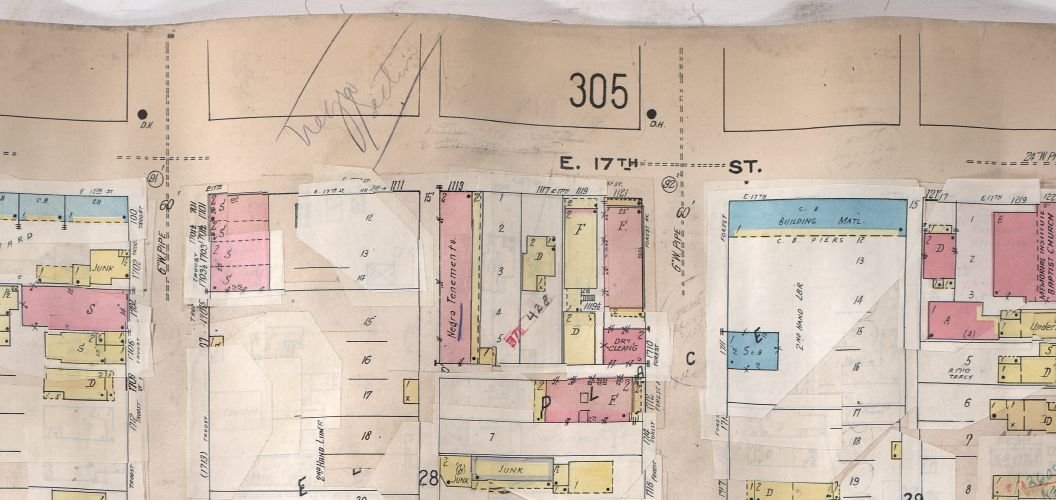
The Bowery Neighborhood
Admiral to 27th; Troost to Paseo
THe Bowery
Admiral to 27th and Troost to Paseo
From the “History of the African Americans in Kansas City” by Sandra Walker, Ph.D.
Beginning the twentieth century in Kansas City from 1900 to 1920, Kansas City had no zoning that restricted tenement-type dwellings. About the Bowery, Walker quotes “Most of the buildings were two and three-story brick structures arranged in two and three-room apartments. They were all nearly poorly constructed and crowded closely together, many of them facing the alleys. One can get some idea of the overcrowded conditions when one considers twenty-two blocks in that area had a population of 4,295.” (Goodwin)
Walker goes on to state that the crowded living conditions in the Bowery contributed to illness, crime, vice, juvenile delinquency, and the area was also characterized by high levels of unemployment. These conditions were replicated throughout many of the neighborhoods where African Americans were permitted to live in Kansas City.
Bibliography:
Walker, Sandra, Ph.D. History of the African Americans in Kansas City. Kansas City, Missouri. The Lowell Press. 1993.
Sanborn Map Company. Kansas City, Jackson, Missouri, Volume 3 1909-1950. Courtesy of the Kansas City Public Library, Missouri Valley Special Collections. kchistory.org



